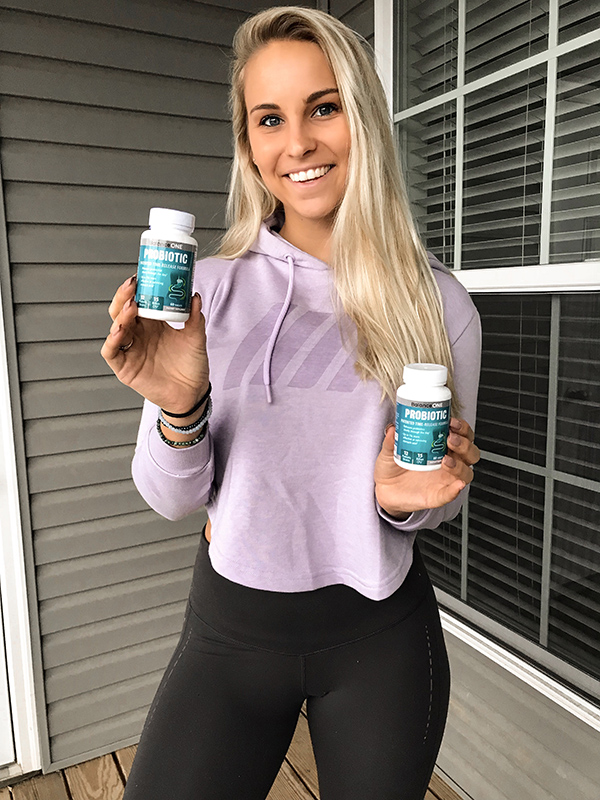Silent Reflux: 5 Key Facts You Need to Know (and How to Find Relief)
Silent reflux—also called LPR (laryngopharyngeal reflux)—is tricky. Unlike typical acid reflux, it doesn’t always cause heartburn.
Instead, you might feel a lump in your throat, hoarseness, or constant throat clearing. These subtle symptoms make it hard to identify, leaving many people untreated for years.
The good news? Silent reflux can often be managed naturally by understanding its triggers and supporting your digestive system. Here are 5 things you need to know about silent reflux—and how to calm it.

1. Silent Reflux Feels Different from Acid Reflux
Silent reflux doesn’t usually cause the burning chest pain typical of GERD. Instead, symptoms often include:
Hoarseness or voice changes
Frequent throat clearing or coughing
Post-nasal drip or a sore throat
A sensation of something stuck in your throat
Because these signs don’t always feel like “reflux,” silent reflux is often misdiagnosed as allergies or infections.
2. Your Throat and Airways Are More Sensitive
When stomach acid travels up into your throat, it can irritate the larynx (voice box) and airways.
Even tiny amounts of acid—too little to cause heartburn—can create inflammation. This is why silent reflux feels more like throat irritation than digestive discomfort.


3. Certain Foods and Drinks Can Make It Worse
Just like regular reflux, silent reflux has trigger foods that relax the lower esophageal sphincter (LES) or increase stomach acid. These include:
Coffee, tea, and carbonated drinks
Citrus fruits and tomatoes
Spicy or fried foods
Chocolate and alcohol
Avoiding these triggers can reduce flare-ups and give your throat time to heal.
Think You Might Be Dealing with Silent Reflux?
If you’re experiencing hoarseness, throat clearing, or that constant lump-in-the-throat feeling, it could be more than allergies or stress—it might be silent reflux.
While avoiding trigger foods can help, lasting relief often means restoring balance to your digestive system.
That’s where our time-release probiotic comes in. It helps calm reflux at the source by supporting healthy digestion and reducing acid buildup—naturally and gently.
Used by over 100,000 customers to support their digestive health.
4. Gut Health Plays a Big Role
When it comes to silent reflux, most people focus only on trigger foods and lifestyle changes—but the health of your gut is just as important.
A poorly balanced gut microbiome can lead to inefficient digestion, causing food to sit longer in the stomach and produce excess gas. This buildup of pressure pushes acid upward, irritating your throat and airways.
By improving gut health—through a balanced diet, fiber-rich foods, and targeted probiotics—you can support better digestion, reduce bloating, and lower the risk of acid escaping into your esophagus.
For many people, this step is the missing piece in managing silent reflux naturally.


5. A Probiotic Can Help Calm Silent Reflux
Instead of just masking symptoms with antacids, probiotics address one of the root causes: gut imbalance.
By replenishing good bacteria, probiotics support smooth digestion, reduce gas and bloating, and help keep stomach acid where it belongs.
When combined with smart dietary choices, the right probiotic can help you achieve long-term relief from silent reflux.
Now that you know what causes silent reflux… here’s the easiest way to start.
"Love this probiotic! It truly has been a life saver for me... I no longer suffer from acid reflux or constant diarrhea or gas." — Jane J, verified customer

Support Your Gut. Stop the Silent Reflux.
Our time-release probiotic targets the root cause of silent reflux—gut imbalance.
Just one tablet a day to feel lighter, calmer, and more in control.
This isn’t just another probiotic. It’s a time-release formula designed to help reduce acid buildup, calm reflux, and restore long-term gut balance—without the side effects of antacids or PPIs.
Daily Gut Support: Helps reduce bloating, ease reflux, and restore balance
Advanced Formula: 12 targeted strains, 15 billion CFUs, and time-release delivery for all-day effectiveness
Trusted Quality: Vegan, non-GMO, and third-party tested for purity and safety
What People Are Saying
Research
1. Ford, C. N. (2005). Evaluation and management of laryngopharyngeal reflux. Journal of the American Medical Association (JAMA), 294(12), 1534–1540. https://doi.org/10.1001/jama.294.12.1534
2. Vaezi, M. F., Hicks, D. M., Abelson, T. I., & Richter, J. E. (2003). Laryngeal signs and symptoms and gastroesophageal reflux disease (GERD): A critical assessment of cause and effect association. Clinical Gastroenterology and Hepatology, 1(5), 333–344. https://doi.org/10.1016/S1542-3565(03)00231-9
3. Gelardi, M., Ciprandi, G., & Cassano, M. (2014). Silent reflux and laryngeal-pharyngeal reflux: The importance of proper diagnosis and treatment. International Journal of Immunopathology and Pharmacology, 27(4), 507–514. https://doi.org/10.1177/039463201402700403
4. Koufman, J. A., & Johnston, N. (2006). Potential benefits of pH 8.8 alkaline drinking water as an adjunct in the treatment of reflux disease. Annals of Otology, Rhinology & Laryngology, 115(5), 330–334. https://doi.org/10.1177/000348940611500503
5. Lechien, J. R., Akst, L. M., Hamdan, A. L., Schindler, A., Karkos, P. D., Barillari, M. R., Calvo-Henriquez, C., Crevier-Buchman, L., Finck, C., Eun, Y. G., Johns, M. M., Karkos, C. D., Leemans, C. R., Nacci, A., Piazza, C., Saussez, S., & Dapri, G. (2019). Evaluation and management of laryngopharyngeal reflux disease: State of the art review. Otolaryngology–Head and Neck Surgery, 160(5), 762–782. https://doi.org/10.1177/0194599819827488